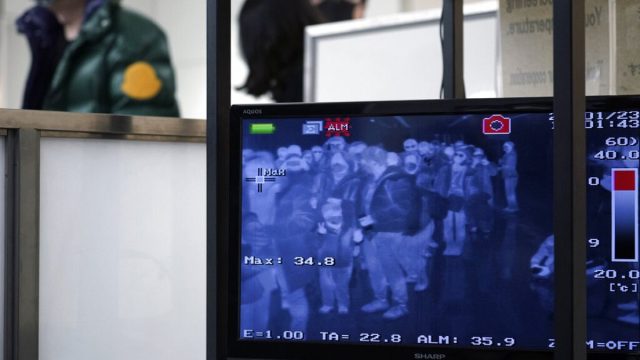The latest generation scanners allow passengers to carry electronic devices and liquids without quantity restrictions, but the European Commission questions their reliability and calls for temporarily restoring the previous model.
Pass the security check Accessing the boarding gate can be a tedious moment in the process of traveling by plane. Some airports Europeans, such as Milan, had managed to speed it up thanks to the installation of latest generation scannerswhich allow passengers to carry electronic and cosmetic devices of any quantity in their luggage, without having to take them out.
Aena also confirmed at the beginning of this year the installation of this equipment in the airports of Madrid Barajas and El Prat in Barcelona. The news was well received. But the scanners will not work to their full potential due to the latest measure taken by Brusselswhich calls for a return to the previous 100 milliliter model.
Will liquids have to be removed from carry-on suitcases in 2024?
All passengers traveling from any airport in Europe, starting September 1, will have to remove electronic devices and all liquids from your luggagewhose containers may not exceed 100 milliliters in capacity.
As established Aenait is allowed to carry laptops, cell phones, tablets, external batteries and hard drives, which must be displayed separately and out of their cases in the storage trays. security.
As for liquids, perfumes, creams, aerosols, foams, gels, shampoo and toothpaste must be placed in individual containers of capacity not exceeding 100 ml; stored in a transparent plastic bag with an opening/closing system and a capacity of no more than one liter (bag approximately 20 x 20 cm.).
Effective but insufficient
The C3 EDSCB equipment technologyas these advanced scanners are technically called, displays high-resolution three-dimensional images of luggage contents from CT scans. They can easily detect explosive components in all types of cosmetics, liquids or electronic devices. The passenger thus avoids the worry about opening suitcases or get rid of part of its contents, with the delay that entails, and you only have to go through the metal detector.
Their effectiveness was called into question with a technical report that the Commission sent to the European Civil Aviation Conference (ECAC) last May, according to which the software of these scanners cannot guarantee its reliability in packaging with a content greater than 330 milliliters.
Finally, Brussels informed on July 31 of the decision to apply “temporary” restrictions to these C3 explosive detection systems as a “preventive measure” until “certain technical problems are resolved”, as reported by a Commission spokesperson. Although, officially, “the Commission has not changed its mind about the quality of this new generation of scanners and its performance has not been questioned,” the spokesperson stressed.
The reality is that all airports that have operated until now with the C3 model will have to turn back to operate with the traditional X-ray scanner, the one that operates in the majority of airports in Europe and the world, whose technology is insufficient to show in detail the interior of the objects and so detect explosive material in liquids.
Economic losses for airports
As the Airports Council of Europe International (ACI) already clarified in a statement, the C3 scanners are “eight times more expensive”, with maintenance costs “four times higher”, so those airports that they have already invested in them to improve the passenger experience “will be heavily penalized, since the benefits associated with the use of this cutting-edge technology“.
The general director of this association, in charge of defending the commercial interests of airports, Olivier Jankovec, declared that “security is not negotiableis one of the main priorities of European airports. Therefore, all airports will fully comply with the new restriction. However, airports that have been the first to adopt this new technology are finding themselves very vulnerable. penalizedboth from an operational and financial point of view (…) The decision to now impose significant restrictions on its use questions the confidence that the sector can place in the current EU certification system for aviation safety equipment.
As for the response of users, as ‘Euronews’ learned after interviewing several passengers at Zaventem airport, the majority declared that they had fully assumed the habit of not traveling with liquids and try to leave the electronic devices at homeso this change in the regulations would not affect them too much. Those who had encountered the high-tech C3 scanners or the advanced body scannersHowever, they recognized a fundamental difference in the ease with which they had accessed the boarding gates.
Despite everything, the answer is unanimous among both airport staff and travelers: everyone wants to start their vacation as soon as possible and in the simplest way. To do this, those who have decided to postpone their rest to September should make sure that sunscreen and beauty products do not take up more than 100 milliliters if they do not want to waste more of their free time in the airport control.






